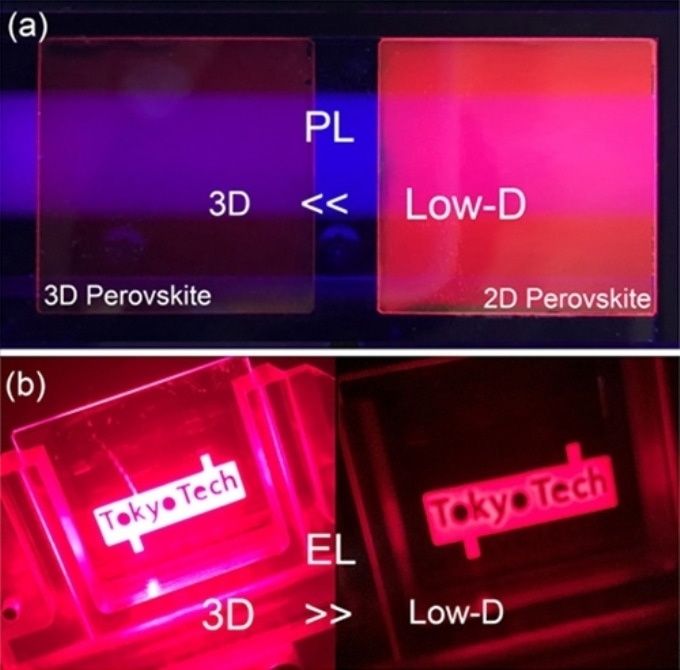Aug 12 2019
By leveraging the quantum confinement effect, researchers at Tokyo Institute of Technology have identified a new method for designing highly efficient perovskite-based light-emitting diodes (LEDs) with record-setting brightness.
 (Image credit: Applied Physics Reviews)
(Image credit: Applied Physics Reviews)
Over the years, many methods have been developed for producing light from electricity. Electroluminescent devices are devices that produce light when applied with an electric current. These devices have become more efficient by orders of magnitude when compared to the conventional incandescent light bulb.
LEDs represent the most universal and prominent category of these devices. Nowadays, many different types of LEDs are available, which can be attributed to a deeper understanding of solid-state physics, quantum mechanics, and the application of alternative materials.
Electroluminescent devices contain a number of layers, with the emission layer (EML) being the most significant one. This layer produces light when an electric current is applied. Metal halide perovskites, with the chemical formula CsPbX3 (X = I, Br, Cl), have been regarded as potential materials for developing the EML. Yet, the performance of the present range of perovskite-based LEDs (PeLEDs) is poor when compared to organic LEDs, which are often used for designing smartphone and TV displays.
A number of scientists had proposed that PeLEDs can be fabricated using low-dimensional (that is, emitting structural units are joined linearly or on a plane in the crystal structure) perovskites that provide better light-emission performance based on excitons’ quantum confinement effect.
An exciton can be described as an electron-hole pair that efficiently produces a photon. Conversely, low-dimensional perovskites have an inherent disadvantage—the materials’ conducting properties, that is, low mobility, are known to be very poor, and this absence of mobility results in low-power efficiency.
Fascinatingly, as discovered by a research team, headed by Professor Hideo Hosono from the Tokyo Institute of Technology, three-dimensional (3D) perovskites can be used to design highly efficient PeLEDs. These materials have excellent mobility of electron and hole and thus can help address the drawback of low-dimensional perovskites.
The researchers explored whether the quantum confinement effect that takes place in low-dimensional materials could also be realized in 3D materials. This effect occurs in low-dimensional materials when a new electron transport layer is used next to the perovskite and eventually leads to interesting light-emission properties.
The EML, within an electroluminescent, is closely packed between two layers—that is, hole transport layers and the electron transport. Both these layers play an important role in ensuring the device’s excellent conducting properties. The researchers discovered that the layers’ energy-level properties also play a vital role in the EML’s emission efficiency.
By adjusting the properties of the electron and hole transport layers in PeLEDs, the researchers can possibly prevent the aforementioned effect by making sure that excitons stay confined in the emission layer.
The whole device structure can be regarded as a scaled-up low-dimensional material in a sense if the energy levels of the electron/hole transport layers are sufficient for exciton confinement.
Hideo Hosono, Professor, Tokyo Institute of Technology
The researchers reported 3D PeLEDs that deliver record-setting performance in terms of low operating voltage, power efficiency, and high brightness. The above figure demonstrates a comparison between 3D perovskite-based luminescent devices and low-dimensional ones.
Apart from these tangible viable achievements, the study provides a better understanding of how the exciton-related characteristics of a material are affected by the neighboring layers and offer a method that can be instantly leveraged to develop optical devices.
We believe this study provides new insight into the realization of practical PeLEDs.
Hideo Hosono, Professor, Tokyo Institute of Technology
Such fascinating developments in light-emitting materials point to a (literally) brighter future.